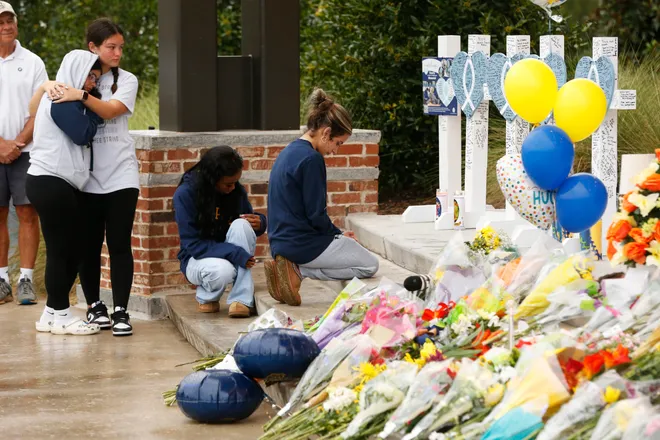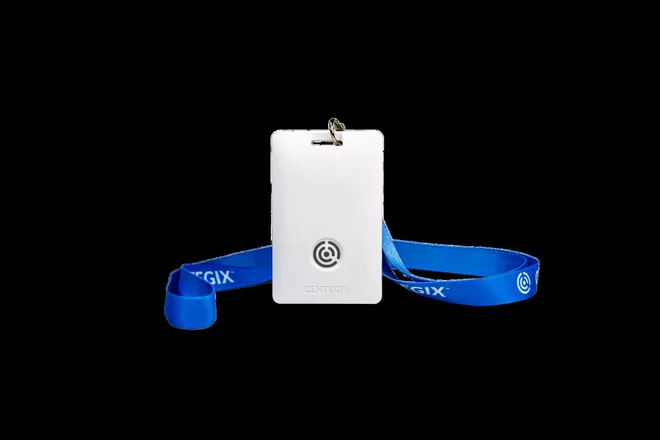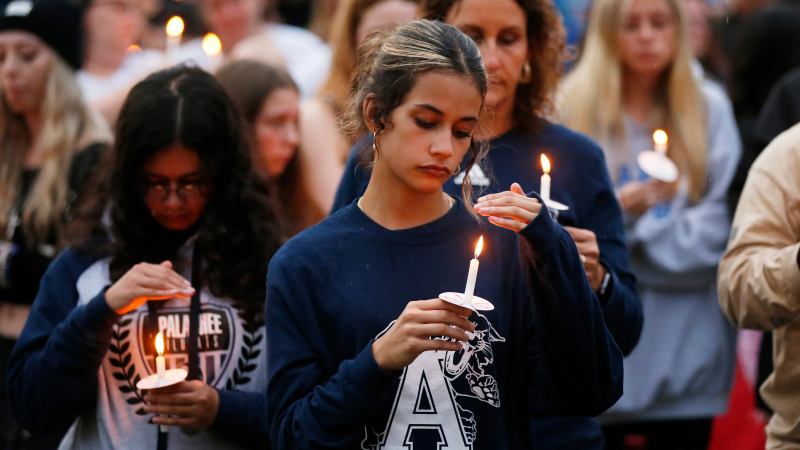What to know about the panic buttons used by staff members at Apalachee High School
One week after staff members at Apalachee High School were outfitted with wearable panic buttons for the new school year, the devices were used to alert law enforcement of the shooting that resulted in the deaths of two students and two teachers.
Authorities said the devices played a role in law enforcement’s swift response. The shooter was apprehended at 10:26 a.m. Wednesday, "moments" after the shots fired call came through, according to the Georgia Bureau of Investigation.
The school’s protocols “and this system activated today prevented this from being a much larger tragedy,” GBI Director Chris Hosey said that day.
Companies like Centegix – which produced the alert system used at Apalachee High School – have been taking off in recent years amid a push for more security technology in schools. While advocates credit the device for getting law enforcement to react quickly, security experts say the reactive security measures aren’t enough on their own to prevent tragedies like the one in Winder, Georgia.

What is Centegix?
There are two main types of panic alert systems used in schools, according to Nikita Ermolaev, a research engineer at IPVM, a trade publication that covers the surveillance industry. One connects to an app on teachers’ smartphones. The other is made available as a physical, wearable button.
The latter was used at Apalachee High School. Atlanta-based Centegix, one of the biggest players in the space, offers school districts wearable, cloud-based alert buttons.

The idea behind the button is to speed up response times in emergencies. If a teacher needs immediate help with a medical emergency or behavior incident, like a fight between students, three clicks to Centegix’s device prompt an alert to local administrators. These types of "everyday emergencies" were behind about 99% of alerts in the 2023-2024 school year, according to a company report.
When a staff member believes an intruder or shooter is on campus, repeatedly pressing the button notifies onsite and offsite responders, including 911 dispatch. Centegix says the exact location of the alert's origin is sent to responders on a digital map, showing where help is needed in real time. This alert also sets off strobe lights and takes over computer screens and intercoms, signaling to students and staff that an intruder is present.
This removes "critical minutes in the response" that can be added on when traditional phone- and voice-based alerting systems are used, the company said on its website.
Devices like Centegix’s CrisisAlert System have taken off in recent years, especially as advocates and lobbyists push for school security laws in more states. One of the biggest drivers, according to security experts, has been the state-by-state push to pass Alyssa’s law.

Named after Alyssa Alhadeff, a 14-year-old victim of the 2018 shooting at Marjory Stoneman Douglas High School in Parkland, Florida, the law calls for public schools to install silent panic alarms linked to law enforcement.
Seven states have passed Alyssa’s law, according to Make Our Schools Safe, a nonprofit that advocates for the legislation: New Jersey, Florida, New York, Texas, Tennessee, Utah and Oklahoma. Some states require public schools to install silent panic alarms. Others say schools must consider the technology.
Lori Alhadeff, Alyssa's mother and founder of Make Our Schools Safe, said she believes the wearable panic buttons worn in Apalachee High School played a "critical role" in law enforcement's response.
"The wearable panic button was instrumental in ensuring that law enforcement could quickly arrive at the scene, take down the shooter, and ultimately save lives," Alhadeff said in a written statement.
Centegix says more than 600,000 people across 43 states wear its alert badge daily, and the system has been incorporated by 80% of public schools in Georgia.
Apalachee High School shooting:Georgia's Romanian community mourns teacher
A 'reactive solution'
Alert button systems have been “rapidly growing" in recent years, according to Ermolaev of IPVM. Now that Centegix has been named by local law enforcement as a key player in the response at Apalachee High School, Ermolaev expects a “significant boom in sales.”
But some security experts are concerned schools may lean too heavily on the technology.
Ermolaev described it as just “one potential part of the security system.”
“In the majority of cases, it's not a preventive solution. It's a reactive solution,” Ermolaev said. “Which means that it will potentially reduce the number of casualties, but will not prevent a person bringing in a gun in the first place.”
And the alert systems' technology can be limited. While Centegix’s buttons don't rely on cellular or Wi-Fi, other systems do. The Department of Justice said poor reception at Robb Elementary in Uvalde, Texas, was“well documented,” and the emergency alert system initiated during a mass shooting in 2022 “was not received by all teachers and staff.”
Alert systems can also be costly. Centegix's system costs schools roughly $8,000 per year. In February, the company said its recurring revenue and customer base grew 100% for the third consecutive year.
Whether or not the devices are worth the money depends on the individual school, said Kenneth Trump, president of the National School Safety and Security Services, a Cleveland-based consulting firm specializing in school security. Trump said instead of using a “template approach” to address safety and security, schools need personalized plans that incorporate existing infrastructure and safety measures.
“Don't make knee-jerk policy or funding decisions," Trump said. Schools should make those decisions "based on a comprehensive assessment of their needs and use of their limited resources."

Dewey Cornell, an education professor at the University of Virginia and director of the Virginia Youth Violence Project, advocates for a “balanced approach” to security that has schools working closely with students, like offering students multiple ways to report concerns and "immediately" interviewing students and parents when concerns about potential violence are raised.
With so many schools "understaffed and over-burdened," Cornell said districts can’t “just plug in a simple solution” and expect it to be sufficient.
"Prevention must start long before someone comes to school with a gun. We cannot and should not rely on panic buttons to stop violence," he said. "The emphasis on expensive school security measures is misguided and detracts from working directly with students."
A statement from Centegix CEO Brent Cobb said the company's work to mitigate negative impacts in emergency situations “must be accompanied by protocols and training.” In Georgia, a state law mandates annual intruder alert drills and safety plans in schools.
“Routine training to build muscle memory of what to do in an emergency is absolutely necessary to bring the people and the technology together," Cobb said. “The commitments that Georgia leadership has made over the last few years played an important role in the mitigation.”
Disclaimer: The copyright of this article belongs to the original author. Reposting this article is solely for the purpose of information dissemination and does not constitute any investment advice. If there is any infringement, please contact us immediately. We will make corrections or deletions as necessary. Thank you.







